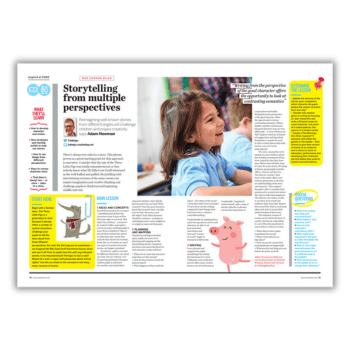This narrative story writing KS2 lesson plan involves reimagining traditional tales from different angles. It will challenge children and inspire creativity…
There’s always two sides to a story. This phrase proves as a great starting point for this approach to narrative. Consider that the tale of The Three Little Pigs was totally misunderstood, or that nobody knew what Mr Billy Goat Gruff witnessed as the wolf huffed and puffed.
Storytelling with intertwining versions of the same events can inspire imagination and creative thinking and challenge pupils to think beyond beginning, middle and end.
Narrative story writing KS2 learning objectives
- How to develop character and motive
- New strategies and starting points to map out stories
- How to see things from different perspectives
- Ways to convey character voice
- That there’s always two – or more – sides to a story
Starter activity
Begin with a familiar story. The Three Little Pigs is a great place to start because it already offers a number of central characters.
Challenge your pupils to tell the story aloud from three different perspectives: the wolf, the third pig and an eyewitness – we imagined Mr Billy Goat Gruff lived three houses down and saw it all!
Pose to pupils how the wolf may interpret events; is he misunderstood? Perhaps he had a cold? Maybe he’s even a vegan wolf passionate about animal rights?
Use this as a hook to the concept of one story, many versions of events.
Adam Newman is KS2 and curriculum leader at Farmilo Primary School and Nursery in Nottinghamshire. Find him on his website at 3edmigos.creativeblogs.net. Browse more resources for National Storytelling Week.











